Spring flowering plants for bees
Create a bee haven with early flowering plants
Bees play a very important role in our environment, and their activity and health has a substantial impact on the entire ecosystem. A healthy population of bees promotes an increased diversity of plants through pollinating flowers, fruits, and vegetables. This supports a range of wildlife, including birds and beneficial insects. Ecosystems would struggle without bees, as this would lead to significant reductions in food supply for humans and wildlife. Around 70% of crops eaten by humans have been pollinated by bees, and 33% of the food we eat comes from bee pollinated plants. Honeybees, in particular, are vital in the pollination of crops, including fruits and vegetables, nuts, herbs, and plants required for medicinal purposes.
There are currently 35 species of bees in the UK that are under threat; we have unfortunately already lost 13 species. Bees face a number of challenges, such as loss of habitat, climate change, a reduction in plant variety, and one of the key threats, the use of pesticides. The intensification of farming is one of the biggest causes of the decline in bees, due to the heightened use of pesticides, such as neonicotinoids. A vast amount of trees, woods, and grassland has been destroyed over time, and an estimated 97% of wildflower meadows have been lost since the 1930s, reducing vital food resources and habitats for bees. Extreme weather and climate change has been disrupting bee nesting behaviour, and changes normal seasonal timings, meaning flowers bloom at different times of the year, compared to when we would expect. Providing bees with the correct nutrients and habitats is vital to protect them and help them to thrive, as this allows for growth and reproduction.
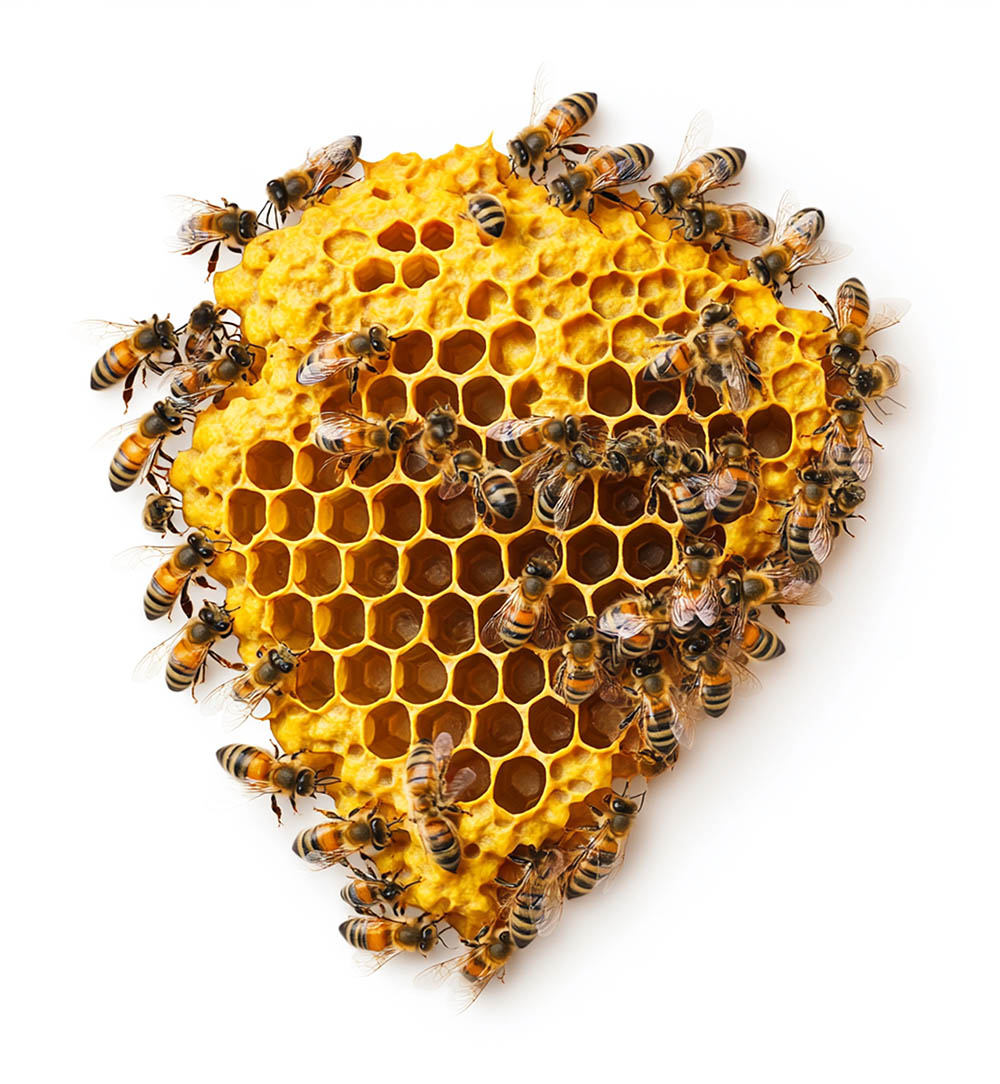
Bees emerge from a long winter in search of nectar and pollen to replenish their energy and sustain their colonies. Nectar is used as an energy source to fly and nest, whilst pollen is a protein that bee grubs need to grow healthily. Incorporating plants that flower in spring will provide a food source for bees, including bumblebees that are first emerging from hibernation, and this food supports healthy populations of bees. The first emerging bumblebees come out of hibernation from around February, so it’s vital to provide them with the nutrients they need.
Growing a varied mix of flowering plants in your landscape can help to ensure a wealth of both nectar and pollen for many bee species. It’s key to include plants with single, open flowers, where the central part of the flower is visible, as these have accessible nectar and pollen. The majority of species with double flowers are of no benefit to bees, as their numerous petals block the important, central part of the flower.
A variety of different colours can be incorporated, but bees are particularly attracted to purple flowers, as this colour is clearer for them to see. Not only will a bee-friendly garden provide pollinators with essential nutrients, but it will also bring plenty of colour and beauty to be enjoyed.
Plants to attract bees in spring
Ajuga reptans ‘Atropurpurea’
Ajuga reptans ‘Atropurpurea’ is a vigorous, mat-forming perennial that forms an evergreen carpet. Its foliage is bronze-purple and strongly veined, and from April, deep blue, upright flowers appear. Ideal for groundcover and for planting at the front of a shaded border.
Buxus sempervirens
Buxus sempervirens is a slow growing evergreen shrub that can grow up to around 5m in height. It has glossy, dark green leaves and produces clusters of green-yellow flowers from April to May. Its dense structure is ideal for trimming into various topiary shapes. Prefers full or partial shade.
Crataegus monogyna
A rounded, deciduous, thorny large shrub or tree with a broad, compact crown. Its thorny branches bear lobed, dark green leaves which transition to gold during the autumn months. In late spring, Crataegus monogyna produces single white, scented flowers, which are a valuable source of pollen and nectar for bees, including bumblebees, honeybees, and solitary bees. These are followed by red berries in autumn.
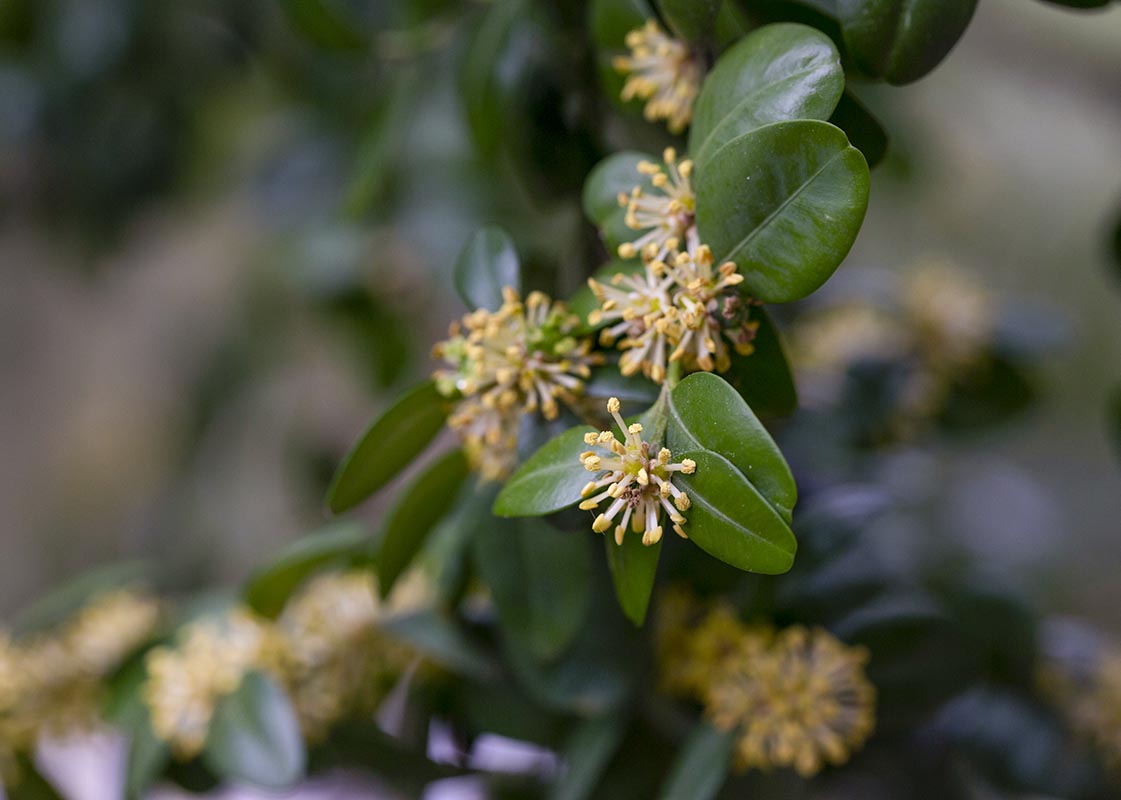
Buxus sempervirens
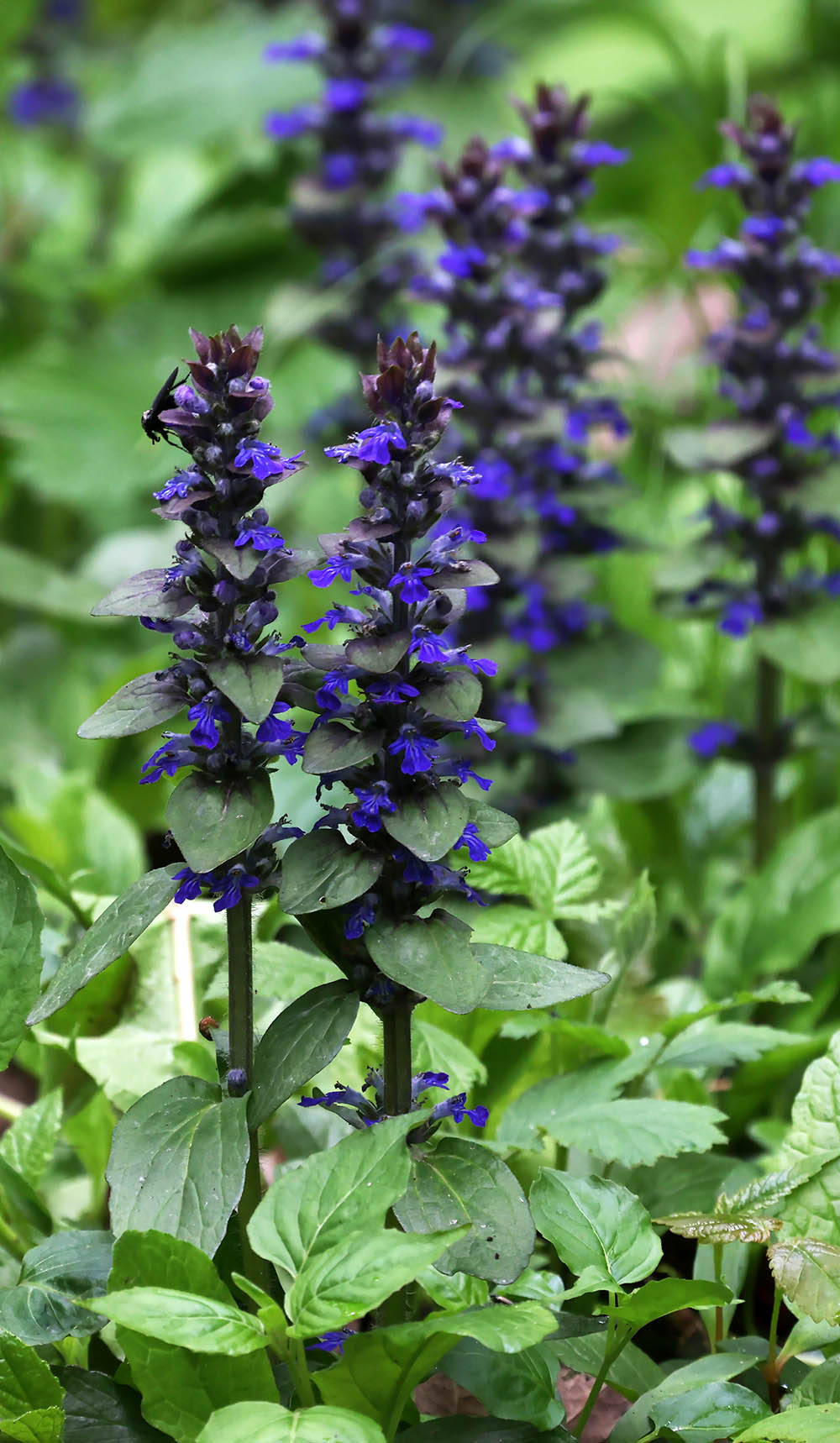
Ajuga reptans ‘Atropurpurea’
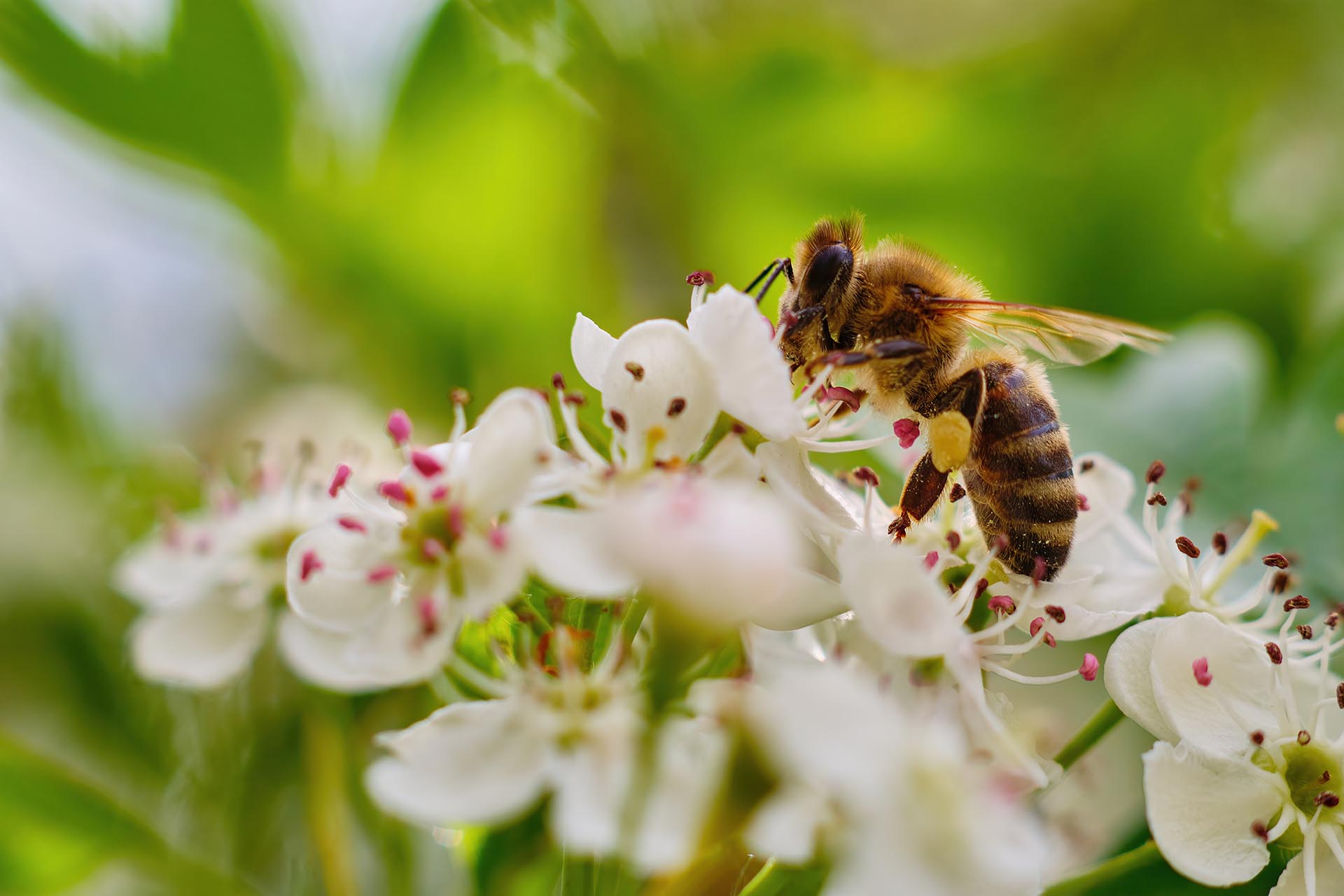
Crataegus monogyna
Crocus vernus
As one of the first flowers to bloom in spring, bees adore Crocus vernus for its early pollen and nectar. Their vibrant flowers in a range of colours, including purple, yellow, and white, bring fantastic colour to gardens during a generally sparse time of year.
Erica carnea
A low growing evergreen shrub with small, narrow, dark green leaves. Produces an abundance of small pink flowers from early to mid-spring. An ideal heather to use as groundcover and provides an excellent source of pollen and nectar in spring.

Crocus vernus
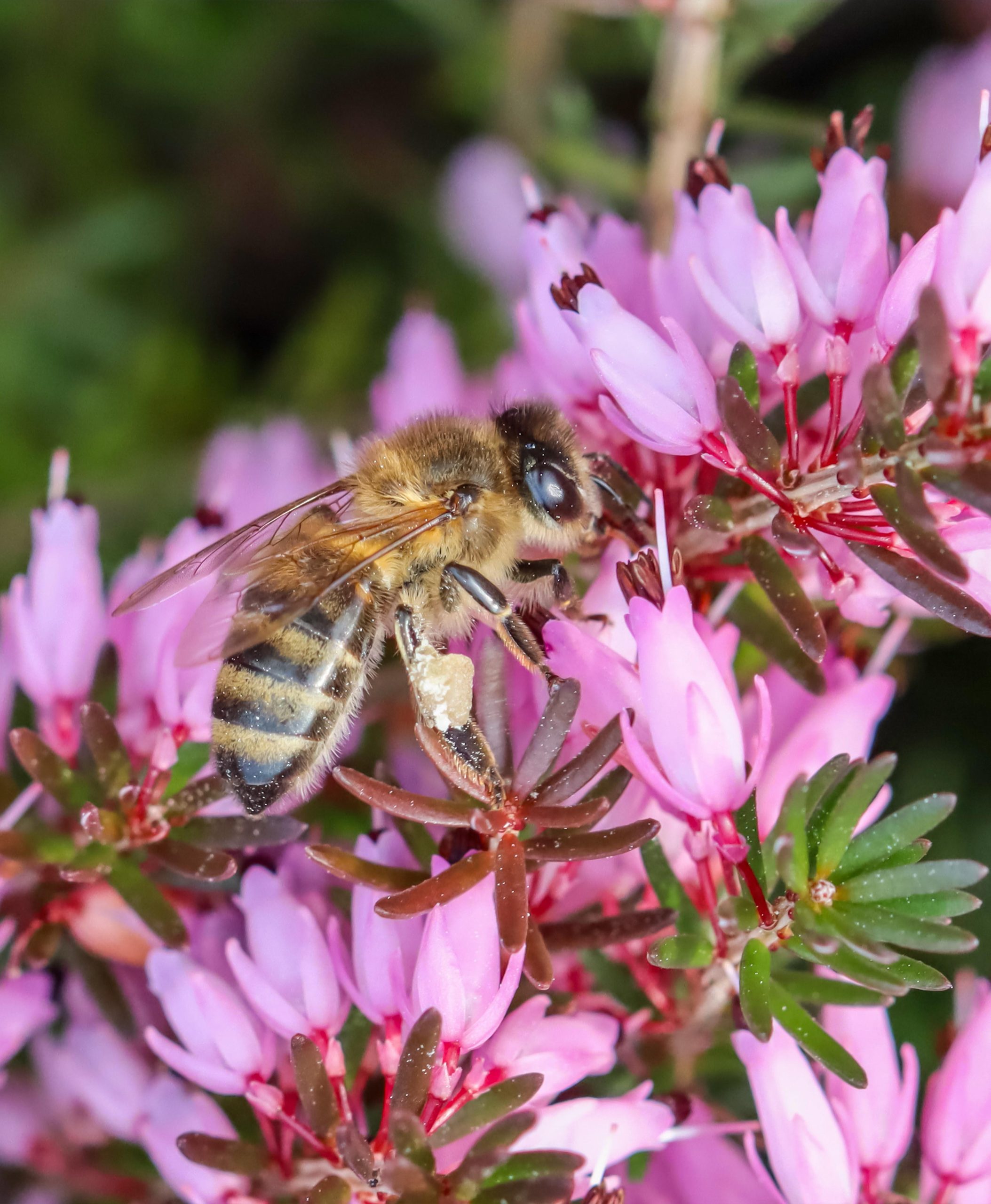
Erica carnea

Helleborus foetidus
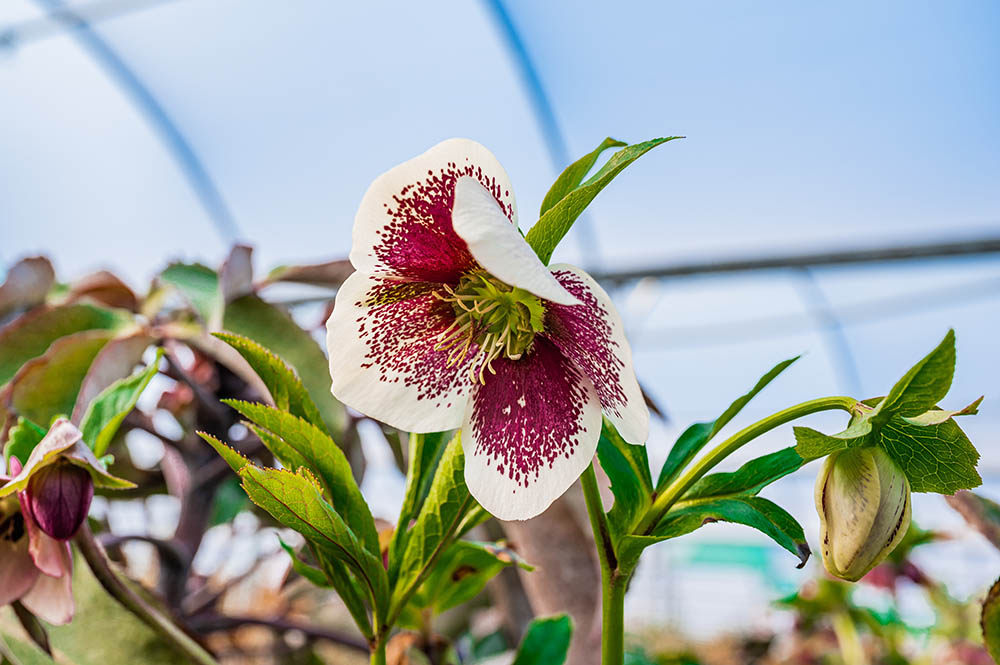
Helleborus orientalis

Lonicera × purpusii
Helleborus foetidus
A compact native perennial with nodding, pale green flowers from January to April, with dark green, deeply divided foliage. Commonly known as stinking hellebore, as its foliage gives off an unpleasant scent if crushed. It’s a great species for the earliest emerging bumblebees.
Helleborus orientalis
A clump-forming perennial with leathery, divided leaves and nodding, saucer-shaped flowers in pink, white, green, or purple, depending on the variety. It thrives in sun or partial shade and well-drained soil, providing early-season interest with its long-lasting blooms. Lovely for planting beneath trees. Helleborus orientalis is a good source of early pollen for honeybees.
Lonicera × purpusii
A bushy deciduous shrub that can grow to around 2m in height, with dark green ovate leaves. From winter to spring, Lonicera × purpusii produces small, tubular, creamy white flowers, which are sweetly scented, and are sometimes followed by red berries. Offers a crucial food source for bees and other pollinators.
Mahonia aquifolium ‘Apollo’
A vigorous, spreading evergreen shrub with dark green, glossy foliage that develops a hint of purple in winter. In spring, it produces clusters of fragrant yellow flowers, which are loved by bumblebees. These are followed by black berries from summer to autumn.
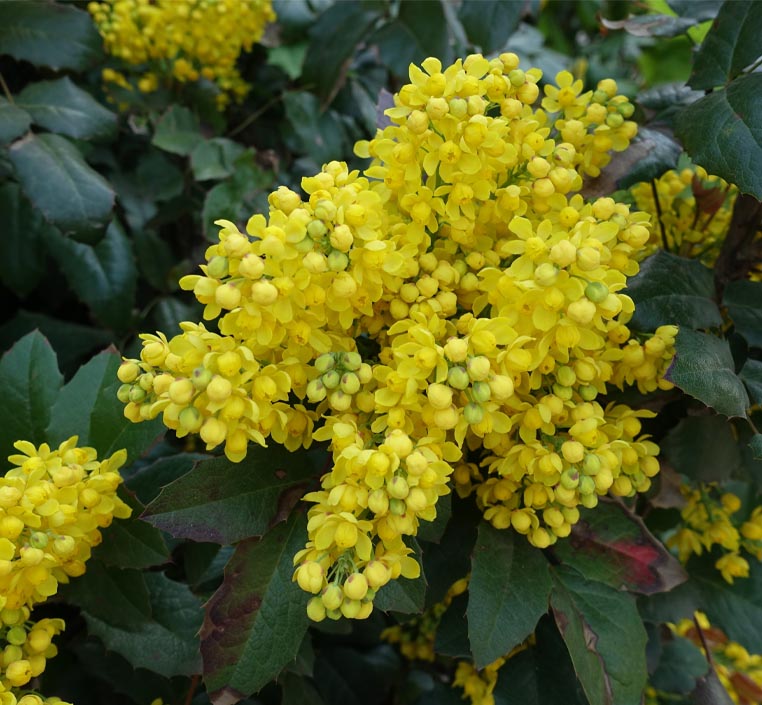
Mahonia aquifolium ‘Apollo’
Muscari armeniacum
Commonly known as grape hyacinth, Muscari ameniacum is a spring flowering bulb with arching green leaves, and violet-blue, egg-shaped flowers on erect stems. Bees, such as the hairy-footed flower bee, are particularly attracted to this species.
Primula vulgaris
A native perennial with bright green, deeply veined leaves and fragrant, lemon yellow flowers from March to May. Primroses are great for planting within a woodland garden, amongst other plants, such as ferns. It’s a great early source of food for bumblebees.
Rosmarinus officinalis ‘Miss Jessopp’s Upright’
An evergreen shrub with upright branches of purple-blue hooded flowers from mid-spring. Its narrow, dark green leaves are highly aromatic and can be used for culinary purposes. It is ideal for growing as a low hedge or for providing vertical interest to a mixed border.
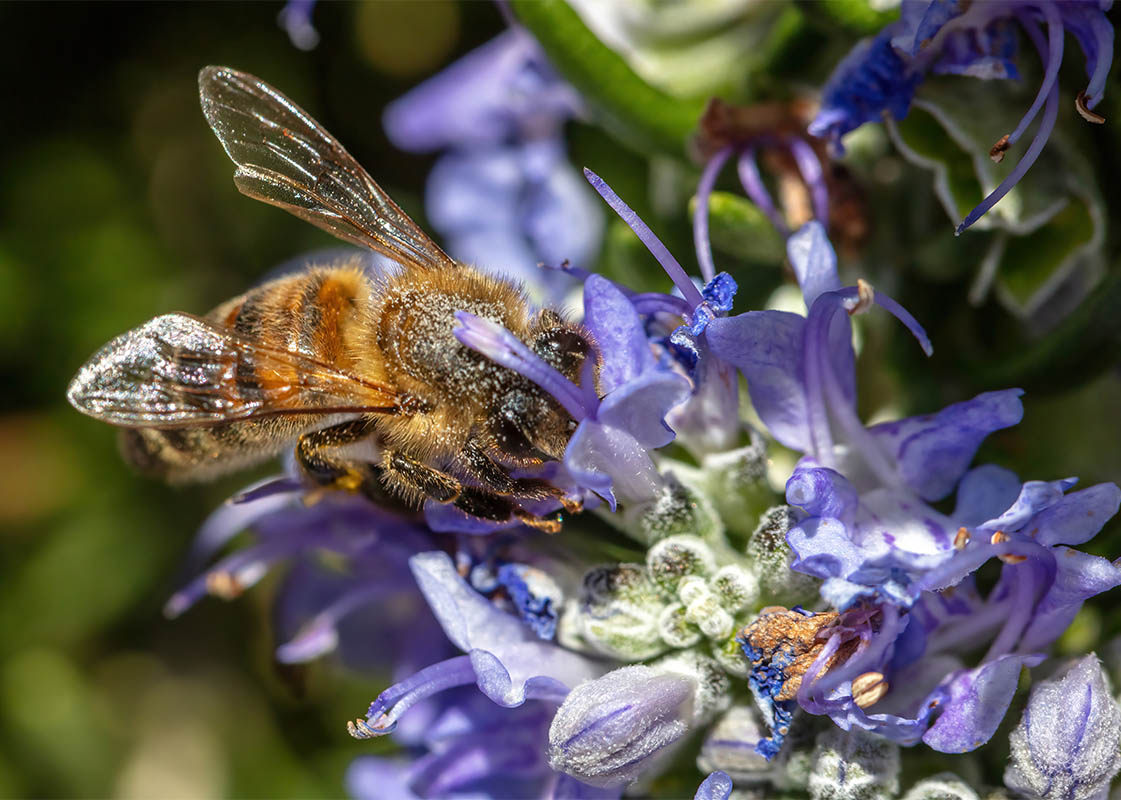
Rosmarinus officinalis
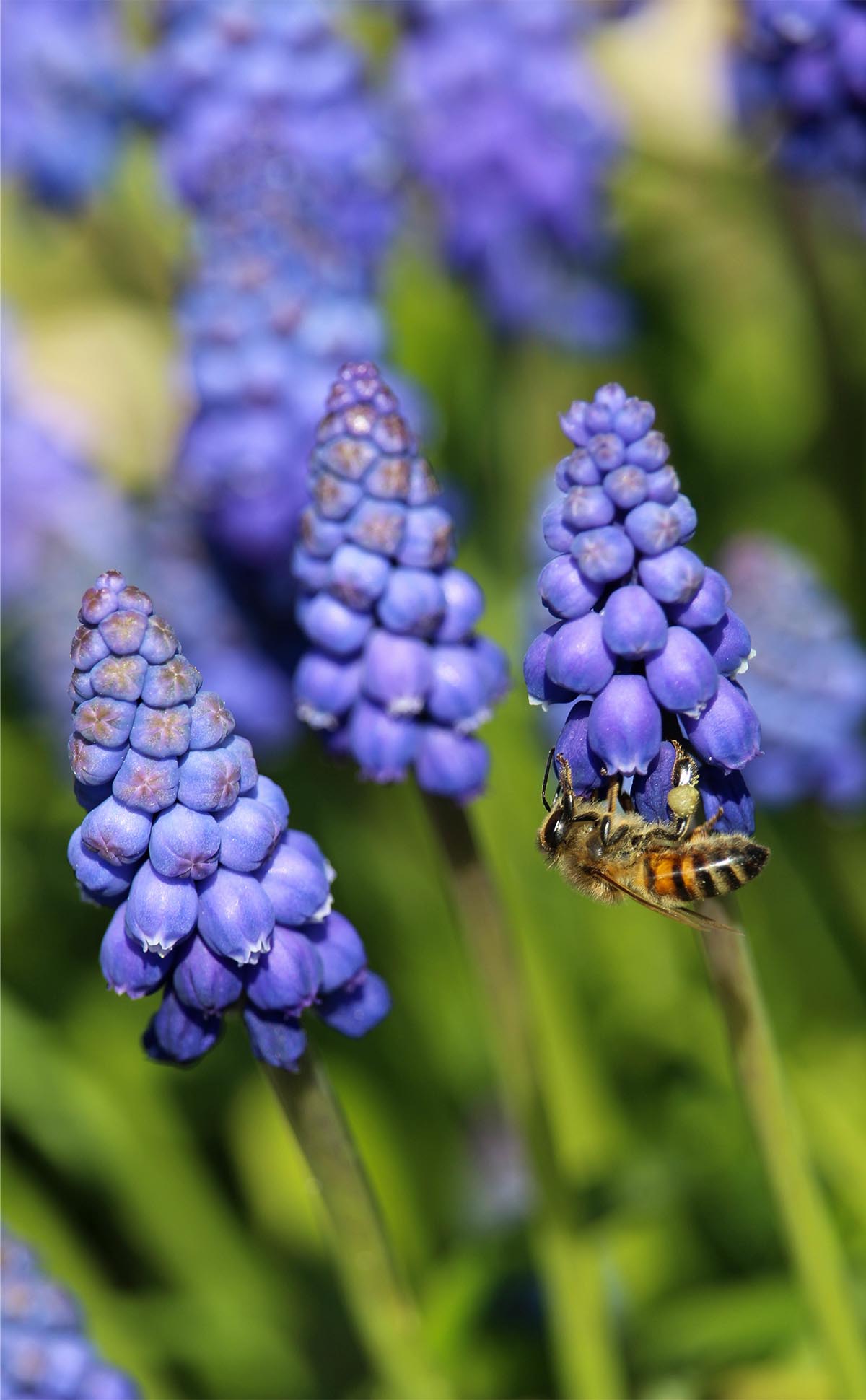
Muscari armeniacum
As well as planting for bees in spring, there are other elements you can incorporate into your garden to encourage bees. It’s vital to plant a variety of plants that flower at various times of the year. This helps to provide a steady supply of nectar and pollen all year round. For example, Lavandula angustifolia is a fantastic species for summer pollen and nectar, whilst Hedera helix is ideal for autumn, followed by Jasminum nudiflorum in winter.
Group plantings are a further way to benefit bees, as they make the plants more visible from a greater distance. Group plantings also allow bees to collect more pollen and nectar in a shorter period of time as they don’t have to travel as far between flowers. Water features can also be incorporated into landscapes to benefit bees. These provide a water source for thirsty bees during dry spells, and also benefit many other wildlife species, including frogs and birds.
If you would like more information on spring flowering plants for bees, contact the G Team today.

